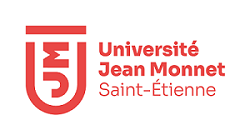Theoretical investigations of material modification using temporally shaped femtosecond laser pulses
Résumé
We present a two-dimensional model, based on a drift–diffusion approach, developed to describe the dynamics of electronic excitation and lattice heating in several dielectric materials with different electron–phonon coupling properties (e.g. fused silica and sapphire) under the action of femtosecond near-infrared laser pulse trains with variable separation time between pulses. The modeling approach was aimed to describe the mechanisms that enable the spatial modulation of the structures induced by temporally modulated laser excitation and ablation of wide-band-gap dielectric materials. The possible geometric contours of the laser-induced craters on the target surfaces are discussed on the basis of the lattice-temperature profiles obtained by modeling. It was found that the observed difference in the crater shapes generated in fused silica and sapphire is conditioned by the difference in dynamics of electron excitation and recombination channels characteristic of these two materials. This effect can be used to convert a given temporal pulse modulation into spatial modulation, opening up new perspectives for material processing in order to obtain desired structure profiles

